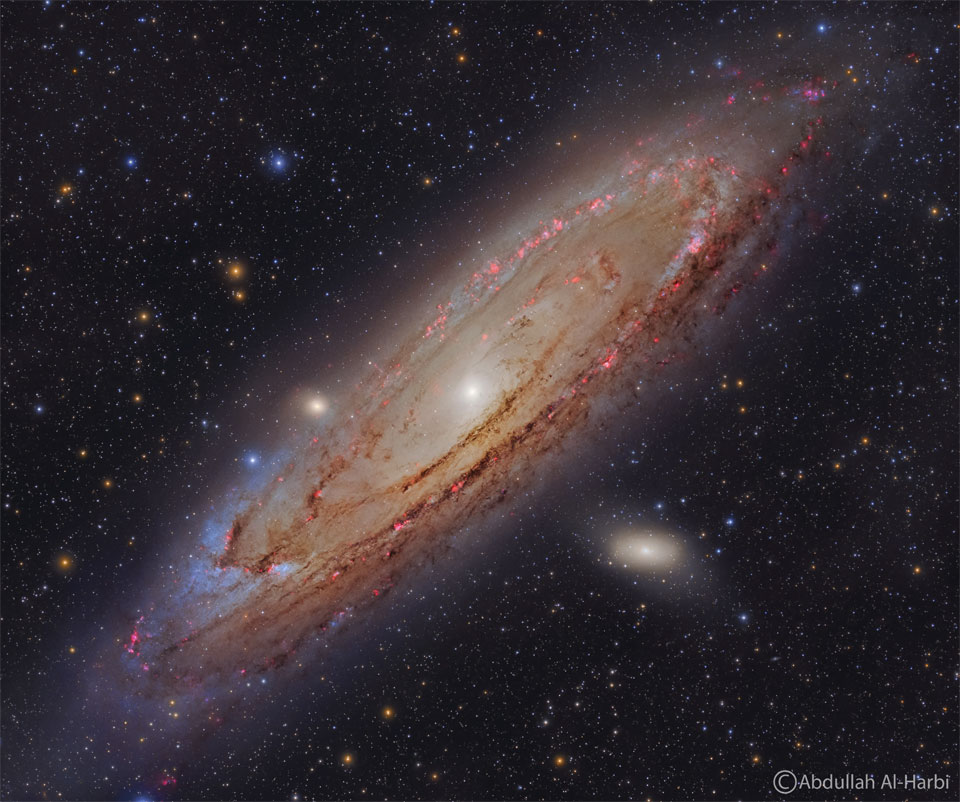2023年3月22日
M31: The Andromeda Galaxy
Image Credit & Copyright: Abdullah Al-Harbi
Explanation: How far can you see? The most distant object easily visible to the unaided eye is M31, the great Andromeda Galaxy, over two million light-years away. Without a telescope, even this immense spiral galaxy appears as an unremarkable, faint, nebulous cloud in the constellation Andromeda. But a bright white nucleus, dark winding dust lanes, luminous blue spiral arms, and bright red emission nebulas are recorded in this stunning fifteen-hour telescopic digital mosaic of our closest major galactic neighbor. But how do we know this spiral nebula is really so far away? This question was central to the famous Shapley-Curtis debate of 1920. M31’s great distance was determined in the 1920s by observations that resolved individual stars that changed their brightness in a way that gave up their true distance. The result proved that Andromeda is just like our Milky Way Galaxy — a conclusion making the rest of the universe much more vast than had ever been previously imagined.
Tomorrow’s picture: open space
M31: 仙女星系
图像版权与提供: Abdullah Al-Harbi
说明: 你能看多远?人类肉眼能轻易见到的最远天体是M31(仙女星系),离我们有2百多万光年远。不过,如果没借助于望远镜,这个庞大的螺旋星系,看起来只是仙女座的一团不起眼的暗淡弥漫云气。在这幅以最邻近大星系为主题的15小时长曝光望远镜数位组合图像里,仙女星系明亮的泛白核心、蜿蜒黝黑的尘埃带、明亮的泛蓝螺旋臂、与泛红的发射星云皆历历在目。不过,我们怎么知道这团”螺旋星云“真的有这么远?此提问是著名的1920年Shapley-Curtis大辩论之中心议题。后来在1920年代,经由观测能分辨、带有规律亮度变化的恒星,找出了它们的真实距离,从而测定了M31的距离。所得到的结果证实M31是个位阶与我们银河系相当的天体,而这个结论,也让宇宙的规模远远超出先前所想的。
明日的图片: open space


